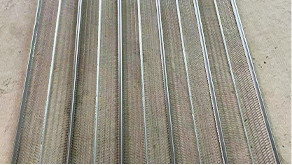វិច្ឆិកា . 08, 2024 00:38 Back to list
Butterfly Valve Flange Options for Various Wafer Types and Applications
Understanding Wafer Type Butterfly Valves with Flanges
Butterfly valves are essential components in various industrial applications, primarily used for regulating flow within piping systems. Among the various types of butterfly valves available, the wafer type butterfly valve stands out due to its unique design and operational advantages. This article explores the characteristics, advantages, and applications of wafer type butterfly valves with flanges, providing insights for engineers and industry professionals.
What is a Wafer Type Butterfly Valve?
A wafer type butterfly valve is a quarter-turn valve where a rotating disc controls the flow of fluid. The wafer designation comes from its slim profile, which allows it to fit between two flanges in a piping system. Unlike lug-style butterfly valves that have threaded holes for bolting, wafer type butterfly valves require the use of flanges on either side for installation. This design minimizes space requirements, making it an ideal choice for confined areas.
Design and Functionality
The central component of a wafer type butterfly valve is a circular disc attached to a shaft. When the shaft is rotated, the disc pivots about its center, either allowing or obstructing the flow of fluid. The straightforward mechanism enables fast operation and reliable sealing capabilities.
Wafer type butterfly valves are designed to be lightweight and compact, which simplifies installation and reduces the overall weight of the piping system. The external body of the valve is typically made from materials such as cast iron, stainless steel, or plastic, depending on the application and fluid characteristics. The sealing mechanism often utilizes elastomeric materials to ensure a leak-proof operation.
Installation with Flanges
One of the significant advantages of wafer type butterfly valves is their compatibility with flanges. These valves are installed between two flanges in a pipeline, forming a tight seal that is essential for preventing leaks. This installation method enhances the structural integrity of the system and allows for easy removal and replacement of the valve when necessary.
The flanged connection also provides better alignment during installation, which is critical in preventing stress on the valve body. Proper alignment reduces the risk of wear and tear on the valve components, extending the lifespan of the valve.
wafer type butterfly valve flange

Advantages of Wafer Type Butterfly Valves
1. Space Efficiency Their slim design allows for installations in tight spaces where conventional valves would be impractical.
2. Lightweight The lightweight nature of wafer type valves makes them easier to handle, transport, and install.
3. Cost-Effective Their simple design and lower material use make wafer type butterfly valves a cost-effective solution for flow control.
4. Versatile Applications These valves are suitable for a wide range of fluids, including water, chemicals, and gases, making them versatile for various industries such as water treatment, food processing, and HVAC systems.
5. Quick Operation The quarter-turn operation facilitates swift opening and closing, allowing for precise flow control.
Applications
Wafer type butterfly valves are commonly used in various applications, including
- Water Supply Systems To control water flow in municipal systems. - Chemical Processing For regulating corrosive and non-corrosive liquids. - HVAC To manage airflow in heating, ventilation, and air conditioning systems.
In conclusion, wafer type butterfly valves with flanges offer a combination of efficiency, cost-effectiveness, and reliability. Their design makes them an attractive choice for a variety of industrial applications, providing critical flow control while minimizing space and weight requirements. As industries continue to seek innovative solutions for fluid management, wafer type butterfly valves will remain a vital component in modern piping systems.
Share